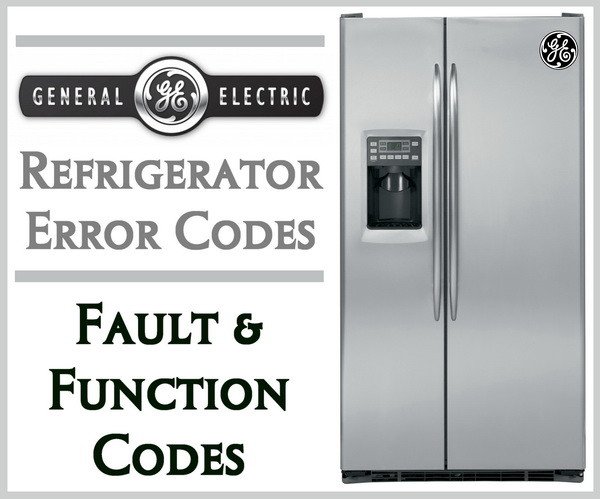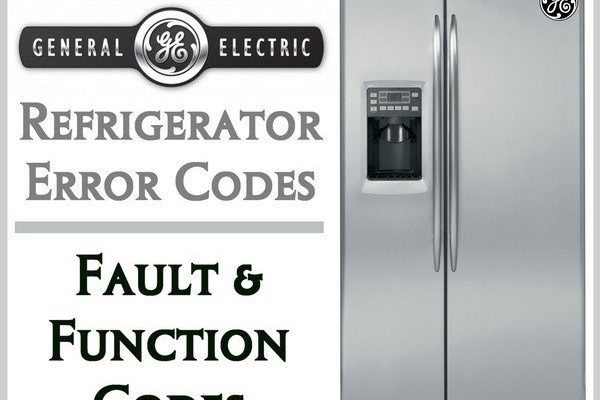
Now, imagine your fridge is like a marathon runner. It’s been running smoothly, but suddenly, it feels a cramp—the E1 error is that cramp. The good news is, just like stretching can ease a runner’s cramp, resetting your GE refrigerator can often banish this pesky error. But understanding how to care for this trusty appliance when it acts up is key to keeping your kitchen running smoothly. So, let’s dive into the steps you need to take to get your refrigerator back in top shape.
Understanding the E1 Error Code
Before we jump into the solution, it’s important to grasp what the E1 error code actually means. In most GE refrigerators, an E1 error is related to the temperature sensor. Think of this sensor as the special thermometer inside your fridge, keeping everything at just the right chill level. When it sends up the E1 flag, it’s like saying, “I can’t read the temperature correctly.”
This might happen for a few reasons. Sometimes, the sensor may have a connection issue, like when your phone loses signal and you can’t send a text. Alternatively, it could just be that the sensor itself is malfunctioning and needs a reset or replacement. Lastly, this error might be triggered by a software glitch in the refrigerator’s control board. It’s kind of like when your computer freezes and needs a quick reboot to solve the issue.
Understanding the root cause can help you feel less overwhelmed. Think of it like learning a few basic car repair tricks—knowing a bit about what’s under the hood makes troubleshooting less daunting. So, with this foundation, let’s look at how to address this error.
Steps to Reset Your GE Refrigerator
Alright, time to roll up your sleeves and get started on resetting that pesky error. You don’t need to be a tech wizard to follow these steps. Think of this process as a simple reset button for your fridge’s brain.
First, start by locating the power supply to your refrigerator. You’ll want to unplug the appliance. This is the equivalent of restarting your computer when it’s acting buggy. Leave it unplugged for about 30 seconds to a minute. This little break gives your fridge time to clear its ‘virtual cache’ and start fresh.
Once you’ve given it some time, plug your refrigerator back into the power supply. This is like reintroducing a refreshed piece of tech back into your life. After plugging it back in, wait for the refrigerator to reboot fully. This might take a few minutes, so don’t worry if it doesn’t spring back to life immediately.
After it’s powered back on, check if the display still shows the E1 error code. If it’s gone, then congrats! You’ve successfully reset your appliance. If it persists, don’t worry, there are other steps you can take, which we’ll explore next.
What If the Error Code Persists?
Sometimes, the initial reset might not do the trick. But don’t fret! There’s still hope. If the E1 error code is sticking around like an unwelcome guest, you may need to look a bit deeper.
One possible issue could be a faulty temperature sensor. Just like a traffic light stuck on red, a malfunctioning sensor might send incorrect signals. In this case, you might need to replace the sensor itself. This is often a straightforward fix and can commonly be handled with some basic DIY skills or by calling in a professional.
Another option is inspecting the wiring leading to the temperature sensor. Over time, connections can become loose or damaged, causing disruption in sensor readings. Think of this like a loose headphone jack that needs a quick snug fit to work properly again. Ensuring that wires are secured could potentially clear the error too.
If after these checks the error code remains, it might be time to consult the refrigerator’s manufacturer’s manual or reach out to GE customer support. They can provide guidance tailored to your specific model or even suggest a qualified technician to help resolve the issue.
Preventing Future Errors
Nobody wants to deal with error codes regularly. Preventative care can keep your fridge running smoothly, much like regular oil changes keep your car purring.
Regularly checking and cleaning your refrigerator’s components can help prevent issues. Make sure the vents inside are clear of food items that could block them. Imagine these vents as your fridge’s lungs—keeping them unobstructed ensures optimum airflow and temperature control.
Also, consider placing a thermometer inside the fridge. This acts as a backup to ensure the internal temperature is consistent with your settings. If you notice discrepancies, you can address them before they lead to another error code.
Lastly, make a habit of checking the door seals. It’s like ensuring a tight seal on a cookie jar—keeping the cool air in and warm air out is crucial for efficiency. A little maintenance goes a long way in preventing those surprise E1 error codes.
By following these steps and tips, you’ll be well-equipped to handle and prevent the E1 error code on your GE refrigerator, keeping your appliance in tip-top shape for years to come.
